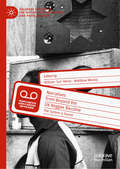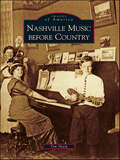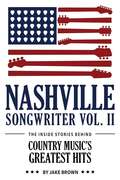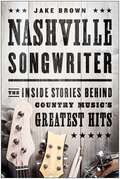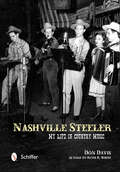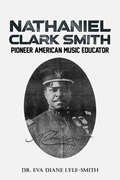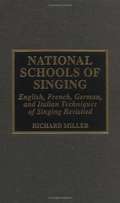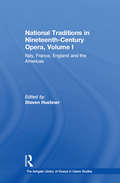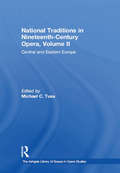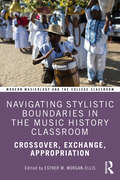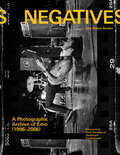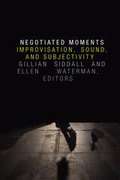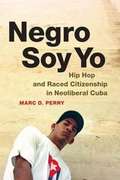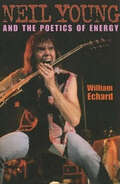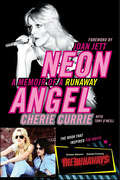- Table View
- List View
Narratives from Beyond the UK Reggae Bassline: The System is Sound (Palgrave Studies in the History of Subcultures and Popular Music)
by Matthew Worley William ‘Lez’ HenryThis book explores the history of reggae in modern Britain from the time it emerged as a cultural force in the 1970s. As basslines from Jamaica reverberated across the Atlantic, so they were received and transmitted by the UK’s Afro-Caribbean community. From roots to lovers’ rock, from deejays harnessing the dancehall crowd to dub poets reporting back from the socio-economic front line, British reggae soundtracked the inner-city experience of black youth. In time, reggae’s influence permeated the wider culture, informing the sounds and the language of popular music whilst also retaining a connection to the street-level sound systems, clubs and centres that provided space to create, protest and innovate. This book is therefore a testament to struggle and ingenuity, a collection of essays tracing reggae’s importance to both the culture and the politics of late twentieth and early twenty-first century Britain.
Nashville Music before Country (Images of America)
by Tim SharpNashville is a name synonymous with music. Years before the first radio broadcast of country music from Nashville�s Grand Ole Opry, music and publishing were central to Nashville�s self-identity. Thousands of songs flooded into the Cumberland and Tennessee River valleys from Southern Appalachia, sung by folk performers. These songs became the foundation for the folk-hymn traditions that grew throughout Tennessee. Into this stream flowed a body of African American spirituals, gospel, and minstrel songs. The arrival of trained German musicians brought classical styles to this gathering stream of musical confluences. These musicians found a home in the academies and businesses of Nashville. Nashville Music before Country is the story of how music merged with education, publication, entertainment, and distribution to set the stage for a unique musical metropolis. The images for Nashville Music before Country come from private collections as well as public libraries and archives.
Nashville Songwriter, Volume 2: The Inside Stories Behind Country Music's Greatest Hits
by Jake BrownNashville's best-kept secret has long been that the majority of country music's biggest hits are written by a Shakespearean behind-the-scenes club of Music Row songsmiths who have churned out many of country's most beloved classics over the past fifty years. Picking up with Volume II of the first-of-its-kind “NASHVILLE SONGWRITER” book series, country music fans get more behind-the-scenes V.I.P. access as this book series reveals the first TOTALLY AUTHORIZED telling of the true stories that inspired hundreds of # 1s by a collective roster of the biggest multi-platinum Country Superstars. <P><P> With 300+ # 1 hits covered throughout the 300+ page book, including many of today's hottest Country Music hits, including recent Carrie Underwood, Lady Antebellum, George Strait, Florida/Georgia Line, Sam Hunt, Eric Church, Miranda Lambert, Tim McGraw, Little Big Town, Jason Aldean, Dierks Bentley, Thomas Rhett, Thomas Rhett, Kenny Chesney, Miranda Lambert, Blake Shelton, George Jones, Zac Brown Band, Toby Keith, Cole Swindell, Johnny Lee, Loretta Lynn, Jerry Reed, Vince Gill, Conway Twitty, Merle Haggard, the Dixie Chicks, Rodney Atkins, Rhett Akins, Luke Bryan, Dustin Lynch, Alan Jackson, Lee Anne Womack, Martina McBride, Gary Evans, etc.
Nashville Songwriter: The Inside Stories Behind Country Music's Greatest Hits
by Jake BrownYou've heard them on the radio, listened to them on repeat for days, and sang along at the top of your lungs—but have you ever wondered about the real stories behind all your favorite country songs? Nashville Songwriter gives readers the first completely authorized collection of the true stories that inspired hits by the biggest multi-platinum country superstars of the last half century—recounted by the songwriters themselves. Award-winning music biographer Jake Brown gives readers an unprecedented, intimate glimpse inside the world of country music songwriting. Featuring exclusive commentary from country superstars and chapter-length interviews with today's biggest hit-writers on Music Row, this book chronicles the stories behind smash hits such as: Willie Nelson's "Always on My Mind" Tim McGraw's "Live Like You Were Dying," "Southern Voice," and "Real Good Man" George Jones's "Tennessee Whiskey" Carrie Underwood's "Jesus Take the Wheel" and "Cowboy Casanova" Brooks & Dunn's "Ain't Nothing 'Bout You" Lady Antebellum's "We Owned the Night" and "Just a Kiss" Brad Paisley's "Mud on the Tires," "We Danced," and "I'm Still a Guy" Luke Bryan's "Play It Again," "Crash My Party," and "That's My Kind of Night" The Oak Ridge Boys's "American Made" George Strait's "Ocean Front Property" and "The Best Day," Rascal Flatts's "Fast Cars and Freedom," and "Take Me There" Kenny Chesney's "Living in Fast Forward" and "When the Sun Goes Down" Ricochet's "Daddy's Money" Montgomery Gentry's "If You Ever Stop Loving Me" The Crickets's "I Fought the Law" Tom T. Hall's "A Week in a County Jail" and "That Song Is Driving Me Crazy" Trace Adkins's "You're Gonna Miss This" David Lee Murphy's "Dust on the Bottle" Jason Aldean's "Big Green Tractor" and "Fly Over States" And many more top country hits over the past 40 years!
Nashville Steeler: My Life in Country Music
by Don Davis50-year account of the rise of country music through the career of Don DavisStories and 100 images showing legends, singers, songwriters, personalities, and fansOver 50 artists, musicians, producers, managers, and others
Nathan's Song
by Leda SchubertThe Jewish immigrant experience in the early 1900s is touchingly and joyfully portrayed in this picture book based on the author's own grandfather.Growing up in a shtetl in Russia, Nathan is always singing, and when he hears a famous opera soloist perform in a nearby town one day, he realizes that music could be his future. But he'll need to travel far from his loved ones and poor village in order to pursue that cherished goal. With his family's support he eventually journeys all the way to New York City, where hard work and much excitement await him. His dream is coming true, but how can he be fully happy when his family is all the way across the ocean?
Nathaniel Clark Smith: Pioneer American Music Educator
by Dr Eva Diane Lyle-SmithIf you are interested in learning about a pioneer African American music educator in the United States, then you want to read the story of Nathaniel Clark Smith. Smith was a prolific and charismatic music educator, musician, and composer who lived during the early years of music education history in the United States. His formal training in music was on a military base in Ft. Leavenworth, KS. Extended studies were from Guild Hall in London, England. A college graduate with B.M.A. and M.M degrees, Smith taught music in educational institutions and industries; was a world traveller who performed with the Ernest Hogan Minstrel Troupe; introduced the saxophone to African Americans; composed and published spirituals, marches, operatic songs, a suite, and an unfinished symphony; and hosted a radio broadcast show which was aired all over the Mid-West. He organized bands and out of that, orchestras, choirs, glee clubs and numerous combinations of the voice and instruments were developed. Smith captured the melodies of the countries that he visited in his music compositions.During his illustrious career, Smith worked with Frederick Douglas, Paul Lawrence Dunbar, Booker T. Washington, Nat King Cole, Lionel Hampton, Milton Hinton, John Phillip Sousa, a young Charlie Parker, and others. His students from the Lincoln High School Band became the nucleus of the big band format of the Mid-West. His Pullman Porter musicians were able to perform at a moment&’s notice.Married with one daughter and the son of an African Sergeant Trumpeter and Indian mother, The Story of Nathaniel Clark Smith is a colourful reading of the times during abolition to the mid depression years in the United States. It is the story of an African-American who survived the challenges of the time to obtain a successful music career, and who helped people to better their lives through music in the Mid-Western and Southern African-American communities of the United States.
National Identity in Contemporary Australian Opera: Myths Reconsidered (Ashgate Interdisciplinary Studies in Opera)
by Michael HalliwellOpera has been performed in Australia for more than two hundred years, yet none of the operas written before the Second World War have become part of the repertoire. It is only in the late 1970s and early 1980s that there is evidence of the successful systematic production of indigenous opera. The premiere of Voss by Richard Meale and David Malouf in 1986 was a watershed in the staging and reception of new opera, and there has been a diverse series of new works staged in the last thirty years, not only by the national company, but also by thriving regional institutions. The emergence of a thriving operatic tradition in contemporary Australia is inextricably enmeshed in Australian cultural consciousness and issues of national identity. In this study of eighteen representative contemporary operas, Michael Halliwell elucidates the ways in which the operas reflect and engage with the issues facing contemporary Australians. Stylistically these eighteen operas vary greatly. The musical idiom is diverse, ranging from works in a modernist idiom such as The Ghost Wife, Whitsunday, Fly Away Peter, Black River and Bride of Fortune, to Voss, Batavia, Bliss, Lindy, Midnight Son, The Riders, The Summer of the Seventeenth Doll and The Children’s Bach being works which straddle several musical styles. A number of operas draw strongly on musical theatre including The Eighth Wonder, Pecan Summer, The Rabbits and Cloudstreet, and Love in the Age of Therapy is couched in a predominantly jazz idiom. While some of them are overtly political, all, at least tangentially, deal with recent cultural politics in Australia and offer sharply differing perspectives.
National Myth and the First World War in Modern Popular Music
by Peter GrantThis book looks at the role of popular music in constructing the myth of the First World War. Since the late 1950s over 1,500 popular songs from more than forty countries have been recorded that draw inspiration from the War. National Myth and the First World War in Modern Popular Music takes an inter-disciplinary approach that locates popular music within the framework of 'memory studies' and analyses how songwriters are influenced by their country's 'national myths'. How does popular music help form memory and remembrance of such an event? Why do some songwriters stick rigidly to culturally dominant forms of memory whereas others seek an oppositional or transnational perspective? The huge range of musical examples include the great chansonniers Jacques Brel and Georges Brassens; folk maestros including Al Stewart and Eric Bog≤ the socially aware rock of The Kinks and Pink Floyd; metal legends Iron Maiden and Bolt Thrower and female iconoclasts Diamanda Gal#65533;s and PJ Harvey.
National Schools of Singing: English, French, German and Italian Techniques of Singing Revisited
by Richard MillerA comprehensive update of a 1977 study of historical and current techniques practiced in four major Western European schools of vocalism, investigating which techniques within the national schools are common to them all and which idiosyncratic regional tendencies remain. Contains chapters on breath management techniques, techniques of vowel formation, vibrato and national tendencies, vocal registration and national attitudes, the different types of voices, and international tonal ideals. Also discusses the North American singer and the national schools.
National Traditions in Nineteenth-Century Opera, Volume I: Italy, France, England and the Americas (The Ashgate Library of Essays in Opera Studies #4)
by Steven HuebnerThis volume covers opera in Italy, France, England and the Americas during the long nineteenth century (1789-1914). The book is divided into four sections that are thematically, rather than geographically, conceived: Places-essays centering on contexts for operatic culture; Genres and Styles-studies dealing with the question of how operas in this period were put together; Critical Studies of individual works, exemplifying particular critical trends; and Performance.
National Traditions in Nineteenth-Century Opera, Volume II: Central and Eastern Europe (The Ashgate Library of Essays in Opera Studies)
by Michael C. TusaThis volume offers a cross-section of English-language scholarship on German and Slavonic operatic repertories of the "long nineteenth century," giving particular emphasis to four areas: German opera in the first half of the nineteenth century; the works of Richard Wagner after 1848; Russian opera between Glinka and Rimsky-Korsakov; and the operas of Richard Strauss and Janácek. The essays reflect diverse methods, ranging from stylistic, philological, and historical approaches to those rooted in hermeneutics, critical theory, and post-modernist inquiry.
Nationalists, Cosmopolitans, and Popular Music in Zimbabwe
by Thomas TurinoThe book talks about how cosmopolitanism gave rise to the nationalist movement in Zimbabwe, explaining the combination of "foreign" and indigenous elements that define nationalist art and cultural projects.
Naushadnama: The Life and Music of Naushad
by Raju BharatanThe seven letters in Naushad’s name are like the seven notes of Hindustani classical music. After just a few years in films, Naushad (1919-2006) went to rule the Hindi cinema music world for around two decades, beginning with the landmark Rattan (1944). His oeuvre (from 1940 to 2005) consists of an unmatched list of jubilees, many of which are musical milestones such as Andaz (1949), Baiju Bawra (1952), Mother India (1957) and Mughal-e-Azam (1960).No individual stays supreme without putting in tremendous efforts to reach the pinnacle and to stay there as long as possible, as our maestro did. And no composer probably moved so cleverly, behind the scenes, than did Naushad to sustain his hold on the public imagination. Although we continue to marvel at the incredible variety of his mellifluous creations that have withstood the test of time, how little most of us know about Naushad the man. Renowned song historian Raju Bharatan fleshes out the real Naushad – his triumphs and tragedies – bringing into play more than 50 years of personal interaction with the tuneful titan. In the process, the author makes the book more sparking with a string of anecdotal gems. For instance: • How Naushad and his contemporaries despite their professed bonhomie, were fiercely competitive (both musically and monetarily) in their attempts to occupy the ‘top spot’. • How many days of rehearsal were needed for some of the Baiju Bawara masterpieces? • How the immortal compositions of Mughal-e-Azam were recorded in a studio no better than a tin shed.This volume also throws new light on the relations and interactions between Naushad and his singers (especially Suraiya, Mohammed Rafi, Lata Mangeshkar, Asha Bhosle and Shamshad Begum); his songwriters (mainly D.N Madhok, Shakeel Badayuni and Majrooh Sultanpuri); and his ‘unsung’ instrumentalists (some of whom were geniuses in their own right).
Navigating Stylistic Boundaries in the Music History Classroom: Crossover, Exchange, Appropriation (Modern Musicology and the College Classroom)
by Esther M. Morgan-EllisAt a time of transformation in the music history classroom and amid increasing calls to teach a global music history, Navigating Stylistic Boundaries in the Music History Classroom adds nuance to the teaching of varied musical traditions by examining the places where they intersect and the issues of musical exchange and appropriation that these intersections raise. Troubling traditional boundaries of genre and style, this collection of essays helps instructors to denaturalize the framework of Western art music and invite students to engage with other traditions—vernacular, popular, and non-Western—on their own terms.The book draws together contributions by a wide range of active scholars and educators to investigate the teaching of music history around cases of stylistic borders, exploring the places where different practices of music and values intersect. Each chapter in this collection considers a specific case in which an artist or community engages in what might be termed musical crossover, exchange, or appropriation and delves deeper into these concepts to explore questions of how musical meaning changes in moving across worlds of practice. Addressing works that are already widely taught but presenting new ways to understand and interpret them, this volume enables instructors to enrich the perspectives on music history that they present and to take on the challenge of teaching a more global music history without flattening the differences between traditions.
Negatives: A Photographic Archive of Emo (1996-2006)
by Amy Fleisher MaddenA gorgeous hardcover time capsule of the emo music scene as it was from 1996 to 2006, featuring never-before-seen photographs and never-before-told stories from key emo musicians, photographers, and icons.While the term emo has become a familiar label, there was a time when that wasn’t the case. Many bands of the mid-to-late '90s would never have classified themselves as such. With the advent of the 2000s, the previously underground emo scene was put on the map, and the term and sound of the genre morphed into something new. Today, the musical and cultural impact of this movement is alive and well, responsible for some of the biggest and most influential acts of the 21st century, from Jimmy Eat World to My Chemical Romance, and the emo label has been reclaimed by those who can’t imagine life without it. Through rare and never-before-seen photographs Amy Fleisher Madden, founder of Fiddler Records (Dashboard Confessional, New Found Glory, Recover, and more), thoughtfully and lovingly put together this moving archive of the second and third waves of emo. With a foreword by Chris Carrabba of Dashboard Confessional and revealing essays from Frank Iero, Geoff Rickly, Norman Brannon, and Matt Pryor, as well as insights and bite-sized narratives from photographers and other musicians of the era, this heartwarming time capsule expounds an extraordinary moment in music history—a scene that gave life to not only numerous big names but also to a powerful sound and even more powerful friendships. Featuring more than eighty bands, including:Jimmy Eat WorldDashboard ConfessionalMy Chemical RomanceTexas Is the ReasonTaking Back SundayThe Get Up KidsThursdayFall Out BoyAmerican FootballJawbreakerFrom basements and VFW halls to dive bars and holes-in-the-wall, during long overnight drives through the middle of nowhere and stolen moments of sleep in carbon-copy motels, Negatives captures the heart of what made up this tight-knit community, an official archive of life as it was, taking you on stage, behind the curtain, and on the road.A UNIQUE LOVE LETTER FROM EXPERT AUTHOR: The first of its kind, Negatives is not a critic's take—rather a touching and heartfelt time capsule and photographic archive of the scene as told by those who lived it.RARE AND NEVER-BEFORE-SEEN MATERIAL: Founder of Fiddler Records Amy Fleisher Madden compiles hundreds of high-quality photos of more than eighty bands, as well as essays and bite-sized narratives from photographers and key musicians of the era. STAR CONTRIBUTORS: Foreword by Chris Carrabba (Dashboard Confessional) with essays by Frank Iero (My Chemical Romance), Geoff Rickly (Thursday), Norman Brannon (Texas Is the Reason), Matt Pryor (The Get Up Kids), Jesse Johnson (Motion City Soundtrack), Bob Nanna (Braid, Hey Mercedes), and Andrew McMahon (Something Corporate). A MUSIC GIFT FOR EVERY EMO FAN: Focusing on the second and third waves (1996–2006), Negatives includes hundreds of high-quality images of bands including Jimmy Eat World, Dashboard Confessional, My Chemical Romance, Texas Is the Reason, Taking Back Sunday, The Get Up Kids, Thursday, The Promise Ring, American Football, Saosin, and more.Perfect for:Emo fans of all kinds and all wavesFans of second-wave bands like Sunny Day Real Estate, third-wave bands like My Chemical Romance, and indie emo bands like Death Cab for CutieMusic history fansMusicians and aspiring musicians Photography enthusiastsMusic lover's gift idea for birthday, graduation, holiday, or any special occasion
Negotiated Moments: Improvisation, Sound, and Subjectivity
by Gillian Siddall Ellen WatermanThe contributors to Negotiated Moments explore how subjectivity is formed and expressed through musical improvisation, tracing the ways the transmission and reception of sound occur within and between bodies in real and virtual time and across memory, history, and space. They place the gendered, sexed, raced, classed, disabled, and technologized body at the center of critical improvisation studies and move beyond the field's tendency toward celebrating improvisation's utopian and democratic ideals by highlighting the improvisation of marginalized subjects. Rejecting a singular theory of improvisational agency, the contributors show how improvisation helps people gain hard-won and highly contingent agency. Essays include analyses of the role of the body and technology in performance, improvisation's ability to disrupt power relations, Pauline Oliveros's ideas about listening, flautist Nicole Mitchell's compositions based on Octavia Butler's science fiction, and an interview with Judith Butler about the relationship between her work and improvisation. The contributors' close attention to improvisation provides a touchstone for examining subjectivities and offers ways to hear the full spectrum of ideas that sound out from and resonate within and across bodies. Contributors. George Blake, David Borgo, Judith Butler, Rebecca Caines, Louise Campbell, Illa Carrillo Rodríguez, Berenice Corti, Andrew Raffo Dewar, Nina Eidsheim, Tomie Hahn, Jaclyn Heyen, Christine Sun Kim, Catherine Lee, Andra McCartney, Tracy McMullen, Kevin McNeilly, Leaf Miller, Jovana Milovic, François Mouillot, Pauline Oliveros, Jason Robinson, Neil Rolnick, Simon Rose, Gillian Siddall, Julie Dawn Smith, Jesse Stewart, Clara Tomaz, Sherrie Tucker, Lindsay Vogt, Zachary Wallmark, Ellen Waterman, David Whalen, Pete Williams, Deborah Wong, Mandy-Suzanne Wong
Negotiating Difference in French Louisiana Music: Categories, Stereotypes, and Identifications (American Made Music Series)
by Sara Le MenestrelSara Le Menestrel explores the role of music in constructing, asserting, erasing, and negotiating differences based on the notions of race, ethnicity, class, and region. She discusses established notions and brings to light social stereotypes and hierarchies at work in the evolving French Louisiana music field. She also draws attention to the interactions between oppositions such as black and white, urban and rural, differentiation and creolization, and local and global.Le Menestrel emphasizes the importance of desegregating the understanding of French Louisiana music and situating it beyond ethnic or racial identifications, amplifying instead the importance of regional identity. Musical genealogy and categories currently in use rely on a racial construct that frames African and European lineage as an essential difference. Yet as the author samples music in the field and discovers ways music is actually practiced, she reveals how the insistence on origins continually interacts with an emphasis on cultural mixing and creative agency. This book finds French Louisiana musicians navigating between multiple identifications, musical styles, and legacies while market forces, outsiders' interest, and geographical mobility also contribute to shape musicians' career strategies and artistic choices.The book also demonstrates the decisive role of non-natives' enthusiasm and mobility in the validation, evolution, and reconfiguration of French Louisiana music. Finally, the distinctiveness of South Louisiana from the rest of the country appears to be both nurtured and endured by locals, revealing how political domination and regionalism intertwine.
Negro Soy Yo: Hip Hop and Raced Citizenship in Neoliberal Cuba
by Marc D. PerryIn Negro Soy Yo Marc D. Perry explores Cuba's hip hop movement as a window into the racial complexities of the island's ongoing transition from revolutionary socialism toward free-market capitalism. Centering on the music and lives of black-identified raperos (rappers), Perry examines the ways these young artists craft notions of black Cuban identity and racial citizenship, along with calls for racial justice, at the fraught confluence of growing Afro-Cuban marginalization and long held perceptions of Cuba as a non-racial nation. Situating hip hop within a long history of Cuban racial politics, Perry discusses the artistic and cultural exchanges between raperos and North American rappers and activists, and their relationships with older Afro-Cuban intellectuals and African American political exiles. He also examines critiques of Cuban patriarchy by female raperos, the competing rise of reggaetón, as well as state efforts to incorporate hip hop into its cultural institutions. At this pivotal moment of Cuban-U.S. relations, Perry's analysis illuminates the evolving dynamics of race, agency, and neoliberal transformation amid a Cuba in historic flux.
Neil Young and the Poetics of Energy
by William Echard“This book uniquely and successfully sustains a cohesive analysis of the work, career, and reception of a single artist . . . Neil Young.” —Daniel Cavicchi, author of Tramps Like UsAs a writer in Wired magazine puts it, Neil Young is a “folk-country-grunge dinosaur [who has been] reborn (again) as an Internet-friendly, biodiesel-driven, multimedia machine.” In Neil Young and the Poetics of Energy, William Echard stages an encounter between Young’s challenging and ever-changing work and current theories of musical meaning—an encounter from which both emerge transformed.Echard roots his discussion in an extensive review of writings from the rock press as well as his own engagement as a fan and critical theorist. How is it that Neil Young is both a perpetual outsider and critic of rock culture, and also one of its most central icons? And what are the unique properties that have lent his work such expressive force? Echard delves into concepts of musical persona, space, and energy, and in the process illuminates the complex interplay between experience, musical sound, social actors, genres, styles, and traditions.Readers interested primarily in Neil Young, or rock music in general, will find a new way to think and talk about the subject, and readers interested primarily in musical or cultural theory will find a new way to articulate and apply some of the most exciting current perspectives on meaning, music, and subjectivity.“A fascinating and unique reading of Neil Young’s music.” —Literary Review of Canada“[An] intriguing, elegantly written analysis of Young . . . Exemplifies the fruitful union of musicology and cultural studies.” —Cotten Seiler, Dickinson College
Neil Young on Neil Young: Interviews and Encounters (Musicians in Their Own Words #19)
by Arthur LizieThe life of rock's most durable troubadour in his own wordsNeil Young on Neil Young: Interviews and Encounters is a revealing anthology of Young's most significant, fascinating, and entertaining discussions, declarations, and dreams, chronicling fifty years of conversations, feature stories, and press conferences. With many interviews widely available for the first time—including new transcriptions and first-time translations into English—the book spans Young's words and ideas from 1967 onward: his early days with Buffalo Springfield and 1970s Harvest-fueled celebrity apex, an artistic rebellion and 1980s commercial dip, and the unexpected 1990s revival as the Godfather of Grunge through to his multi-decade victory lap as a living legend.Across the decades, Young's own words tell the story as he perpetually reinvents himself as a master of music and film, a technology pioneer and innovator, and a bold political observer and strident environmental advocate.
Neil and Me
by Scott YoungScott Young chronicles his son's early years in and around Toronto and Winnipeg and his rise from journeyman, musician to superstar in the 1960s and 1970s. The frequent occasions when Scott and Neil's paths have crossed - from backstage meetings and family get-togethers to a sold-out appearance at Carnegie Hall - give a fascinating portrait of an enigmatic star.From the Paperback edition.
Nelly's Sweet Song
by Jennifer Riesmeyer ElvgrenNelly’s grandfather has been away fighting in the Revolutionary War. Her entire family wants to make the homecoming special, but Nelly keeps causing trouble! What can she do to welcome him home?
Neon Angel: A Memoir of a Runaway
by Tony O'Neill Cherie CurrieIn this candid autobiography, Cherie Currie—the original lead singer of ‘70s teenage all-girl rock band The Runaways—powerfully recounts her years in the band, her friendship with guitarist Joan Jett, and her struggle with drugs. An intense, behind-the-scenes look at rock music in the gritty, post-glam era, Neon Angel is a must-read for anyone whose heart beats to the rhythm of David Bowie, Suzi Quatro, Nick Gilder, and the Sex Pistols, and for every fan of the movie it inspired: The Runaways, starring Dakota Fanning and Kristen Stewart as Cherie Currie and Joan Jett.
Neon Screams: How Drill, Trap and Bashment Made Music New Again
by Kit MackintoshExamining new genres from the UK and across the Atlantic, including mumble rap, Brooklyn drill, UK drill, trap dancehall and Afrobeats, Neon Screams explores the dystopias and dissociative transcendence offered by this boundary-pushing music.With a foreword by Simon Reynolds, Neon Screams explores the plethora of new street genres that have emerged at the turn of the 2020s. Neon Screams is a manifesto, a rallying cry for the new musical futurism. Taking street music&’s embrace of Auto-Tune in the late 2000s as his starting point, Kit Mackintosh launches you through a whirlwind tour of the last decade of cutting-edge music, championing the modern genres still uncovering the sonic impossible, from mumble rap to drill to Afrobeats, bashment and beyond. Beginning where most future music chronicles end, Mackintosh establishes a new pantheon of pioneers and innovators. Offering dizzying insights into the likes of Future, Young Thug, Migos and Vybz Kartel, Neon Screams is conceptual weaponry to use against all those who say music isn&’t what it used to be. Part polemic, part synesthetic possession, Neon Screams is essential reading for everyone eager to uncover the new frontiers of future music.
